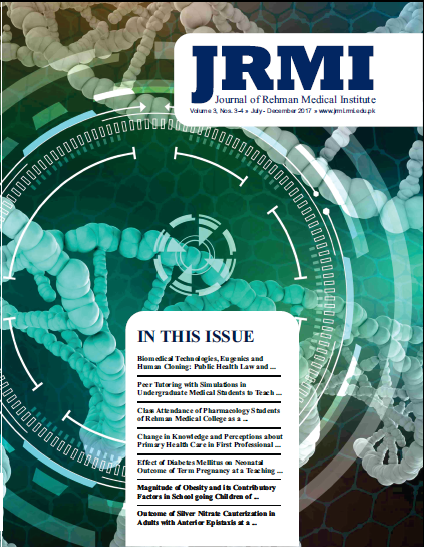Peer Tutoring With Simulations in Undergraduate Medical Students to Teach Basic Life Support: A Randomized Controlled Educational Trial
Keywords:
Basic Life Support, Peer Tuition, Peer Assisted Learning, Undergraduate Medical EducationAbstract
Introduction: Basic Life Support (BLS) is an important part of healthcare training conducted in small and interactive group format; however, hiring BLS instructors is costly. Peer tuition is an old technique, now being formalized to teach BLS. Role of junior peer tutors is not reported in the literature.
Materials & Methods: A single blind, randomized controlled educational trial to measure tutee performance after peer tuition versus conventional tuition in BLS was undertaken at Peshawar Medical College from December 2016 to March 2017. Pre-clinical students were trained as peer tutors. Students from all MBBS years were voluntarily enrolled in a course of BLS; 177 students were randomized into experimental, (n=87, peer tutors) and control, (n=90, conventional teaching). Pre and post-test, knowledge and skill scores were recorded for each group. SPSS Version 21 was used for descriptive statistics; paired samples t-test was applied to detect significant differences in performance, keeping p≤0.05 as significant.
Results: Pre-test scores were not significantly different between groups. Test group showed significant improvement in post-test scores over pre-test scores for both clinical and pre-clinical students, (p<0.001). Control group did not show improvement for pre-clinical students. Clinical students showed significant improvement in control group as well.
Conclusion: BLS can be safely and effectively taught to pre-clinical medical students in small groups by junior peer tutors having BLS training.




